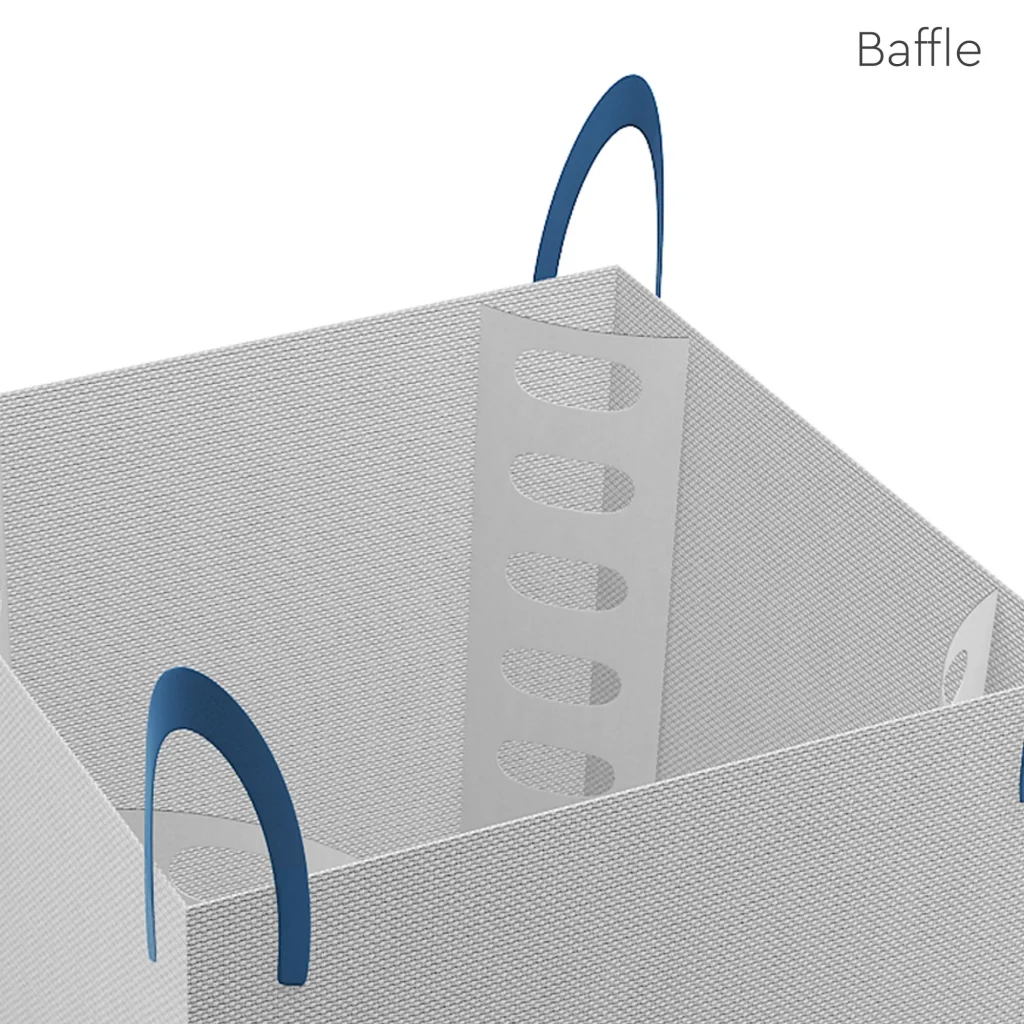
VidePak’s FIBC (Flexible Intermediate Bulk Container) bags combine 180–220 GSM laminated PP fabric, UV-resistant coatings, and FDA-compliant liners to safely store 500–2,000 kg of livestock feed while reducing plastic waste by 40% through solar-powered manufacturing. With a 2 MW rooftop photovoltaic system offsetting 1,200 tons of CO₂ annually, our ISO 14001-certified production process ensures ASTM D5635-21 compliance, delivering tensile strengths of 50–70 N/5cm and 5+ reuse cycles—proving industrial durability and environmental responsibility can coexist.
1. Material Innovation: Balancing Strength and Sustainability
FIBC bags for livestock feed demand rigorous material engineering to prevent contamination, withstand harsh handling, and align with global eco-standards.
1.1 High-Performance Polypropylene Blends
VidePak’s fabric integrates:
- Virgin PP Base: 80% purity ensures chemical inertness (FDA 21 CFR 177.1520 compliance).
- 30% Recycled PP: Post-consumer resin (PCR) certified by GRS 4.0, reducing virgin plastic use by 1.2 kg per bag.
- Anti-UV Additives: 2% HALS stabilizers extend outdoor storage life to 18 months (ISO 4892-3).
For example, a Canadian poultry farm reported zero rodent breaches across 10,000 bags of 1,000 kg chicken feed stored outdoors using VidePak’s UV-treated FIBCs.
1.2 Functional Liners for Feed Safety
| Liner Type | Material | Thickness | Key Benefit |
|---|---|---|---|
| Food-Grade PE | Low-density polyethylene | 100–150μ | Blocks moisture (<0.5% absorption) |
| Anti-Static | Carbon-coated PP | 80–120μ | Prevents dust explosions (ATEX compliance) |
| Biodegradable | PLA/PP hybrid | 90–130μ | 90% compostable in 24 months (EN 13432) |
A Brazilian soy meal exporter eliminated fungal growth using VidePak’s PE-lined FIBCs with 0.03% water vapor transmission rates (WVTR).
2. Solar-Powered Manufacturing: Reducing Carbon Hoofprints
VidePak’s commitment to sustainability extends beyond product design into energy-efficient production.
2.1 2 MW Photovoltaic System
- Annual Output: 2.6 GWh, covering 85% of plant energy needs.
- Grid Contribution: Surplus energy powers 600+ local households, certified by I-REC Standard.
- CO₂ Reduction: Equivalent to planting 55,000 trees annually.
2.2 Closed-Loop Recycling
- Take-Back Program: Recovers 75% of used FIBCs for pelletizing into new fabric.
- Waste Minimization: AI-guided cutting reduces fabric scrap to <1.5%, repurposed into filler material.
A Dutch feed mill achieved zero landfill waste by partnering with VidePak’s recycling initiative, saving €18,000/year in disposal costs.
3. Technical Specifications for Livestock Applications
3.1 Load Capacity & Durability
| Parameter | Specification | Test Standard |
|---|---|---|
| Safe Working Load (SWL) | 1,000–2,000 kg | ISO 21898:2020 |
| Safety Factor | 5:1 (5,000–10,000 kg breaking strength) | EN 1898-1:2013 |
| Stacking Height | 3 bags high (2.4 m) | ASTM D5277 |
| Seam Strength | ≥80% of fabric strength | ISO 13934-2 |
3.2 Customization Options
- Discharge Types: Spout top, duffle top, or open-top designs for auger/conveyor compatibility.
- Lifting Loops: 4–6 polyester loops with 2,500 kg break strength (EN 12195-2).
- Printing: 6-color HD flexography with QR codes for traceability.
4. The Future: Circular Systems and Smart Packaging
4.1 RFID-Enabled Recycling
- Embedded Tags: Track bags through collection networks, achieving 92% recovery rates in EU trials.
- Blockchain Integration: QR codes link to feed origin data, complying with EU Regulation 2019/4 on feed hygiene.
4.2 Bio-Based Material Breakthroughs
- PHA Liners: Polyhydroxyalkanoate coatings degrade in soil within 6 months (ASTM D5988).
- CO2-Derived PP: 30% lower cradle-to-gate emissions using carbon capture monomers.
5. FAQs: Addressing Livestock Industry Concerns
Q1: How do FIBC bags prevent insect infestation in feed?
A: Our 150μ PE liners are hermetically heat-sealed, achieving <0.01 mm gaps to block pests (tested per ISO 23667).
Q2: Are bags suitable for liquid feed supplements?
A: Yes. VidePak’s 200 GSM PP/PET laminate resists hydrolytic degradation (ASTM D570) and leaks at ≤0.1 g/hr under 20 kPa pressure.
Q3: What certifications apply to solar energy claims?
A: TÜV Rheinland certifies our PV output, contributing to Renewable Energy Certificates (RECs) tradable in 48 U.S. states.
6. References
- VidePak Official Website: PP Woven Bags Manufacturer
- Email: info@pp-wovenbags.com
- Industry Standards: ISO 21898, EN 13432, ASTM D5635
This article underscores VidePak’s leadership in merging agricultural packaging efficiency with ecological stewardship. For specialized solutions, explore our FIBC bulk bags or learn how we’re advancing sustainable PP innovations in livestock feed packaging.